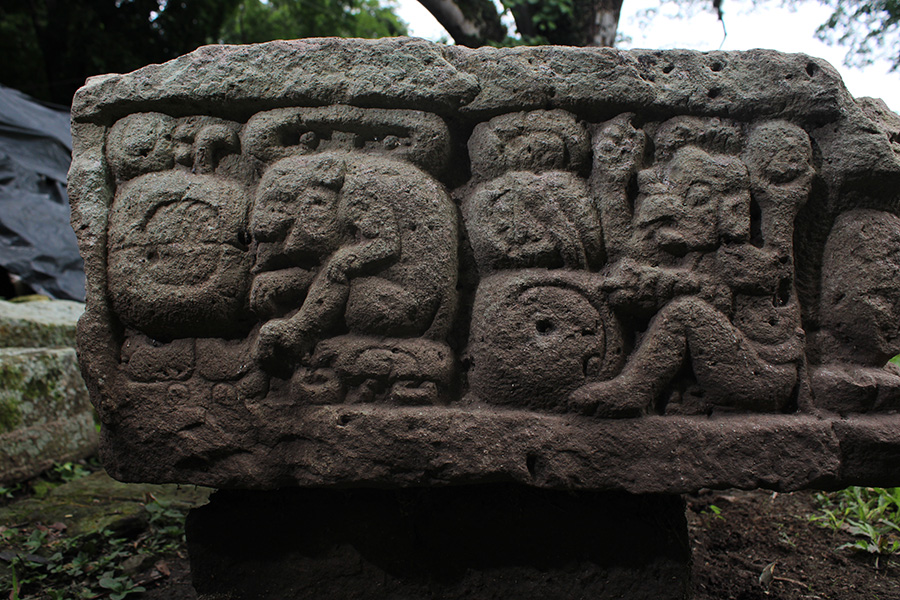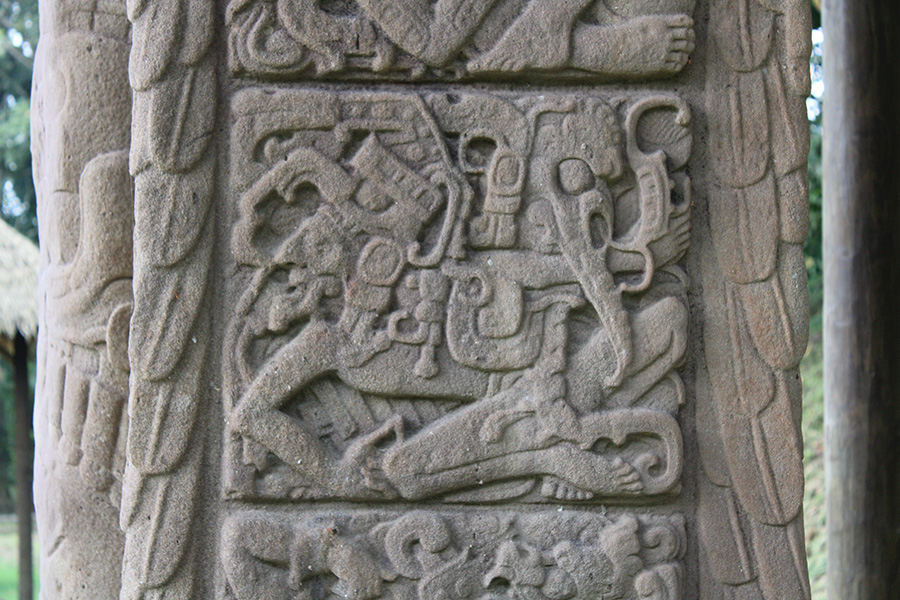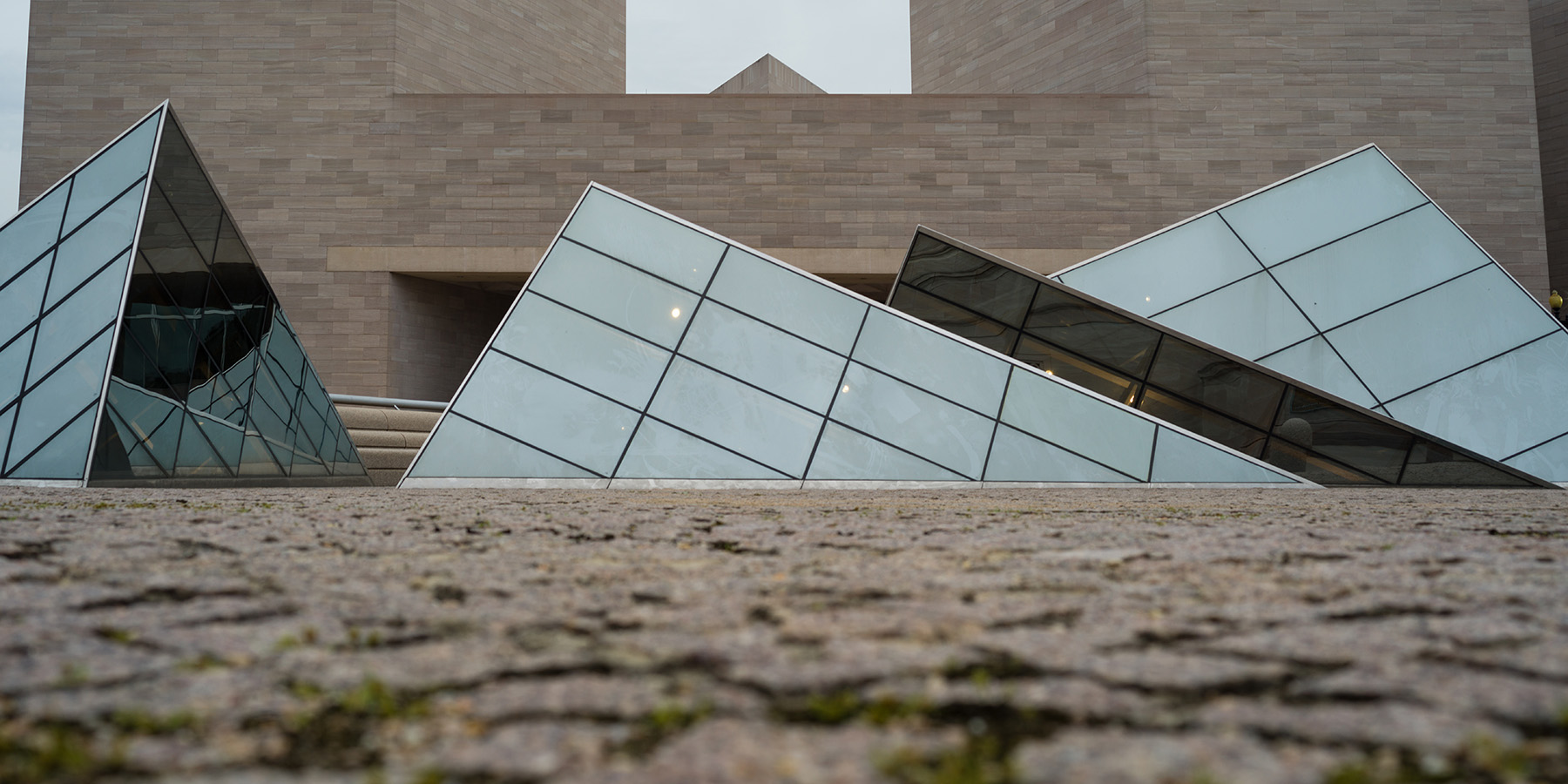Catherine L. Nuckols
Unfolding the Sign: Iconicity and Figuration in Maya Full-Figure Inscriptions
In the eighth century CE, the scribes of the Late Classic Maya sites of Copán, Quiriguá, Palenque, and Yaxchilán (in Honduras, Guatemala, and Mexico) began carving monumental inscriptions in a unique style: instead of the usual signs composed of abstract elements and the disembodied heads of supernaturals, animals, and humans, these inscriptions took on entire bodies that reclined, gestured, and called out, all while functioning as linguistic signs.

Altar 41 (detail of south side), c. 771 CE, volcanic tuff, Copán, Honduras. Photo: Catherine L. Nuckols
Epigraphic studies have determined that these inscriptions record the standard content of most Maya monuments: the passage of time, the dedication of monuments, and the reign of rulers. However, a solely epigraphic approach generally overlooks the most unique aspect of full-figure inscriptions: their visual elaboration into full-bodied images. At best they are mentioned briefly as a highly innovative anomaly; at worst they are ignored altogether. This issue creates a conceptual gap in our knowledge of Maya scribal practice that I propose can best be remedied through a visual approach to these inscriptions.
My dissertation, “Unfolding the Sign: Iconicity and Figuration in Maya Full-Figure Inscriptions,” interrogates the visual aspects of full-figure inscriptions. By building on the foundation of the Maya concept ts’ihb (an ancient and modern term encompassing not only writing, but also painting and mark-making), I present full-figure glyphs as a challenge to the assumed binary of art and writing, as these glyphs depart from standard glyphic convention to fully embody their iconographic personae and interact with other glyphs around them.
The first chapter of this project introduces a corpus of 15 eighth-century monuments, each carved with full-figure inscriptions of varying length. I present the theoretical framework and methodologies employed to support my analysis and establish the content and context for each monument. The second chapter (completed in 2021) establishes a visual foundation for this analysis by isolating and examining each of the more than 450 individual signs to identify the iconographic referents used for each full-figure glyph. I continue this approach in the third chapter, which takes these newly identified figures and examines their interactions with each other and nearby non-figural glyphs within their respective glyph blocks (the delineated square or rectangular space within which groups of glyphs sit). This figural analysis asks how these actions and interactions compare to and subvert both conventional glyphic tradition and figural representation in the Maya world.

Stela D (detail of east side), 766 CE, sandstone, Quiriguá, Guatemala. Photo: Catherine L. Nuckols
The fourth chapter of my dissertation returns full-figure glyphs to the larger context of the monument and its surrounding environs, weaving together the previous analyses to ask how the presentation and reading of full-figure inscriptions would have created a phenomenological experience incorporating pun, rhythm, and play. It juxtaposes the visual components of the glyphs with their linguistic readings to propose multiple ways of experiencing the same text. I continue interrogating the human experience with these monuments in my fifth chapter, which employs both epigraphic and stylistic analyses to determine whether the monuments represent the work of a single scribal workshop or that of multiple scribes employing a shared concept at individual sites throughout the Maya world. The final chapter summarizes my arguments from previous chapters and contextualizes full-figure inscriptions even further, placing them within broader Mesoamerican visual traditions that employed a pars pro toto method of corporeal representation. I conclude by reiterating the value of employing the concept of ts’ihb to approach Maya visual practice and by tying these full-figure inscriptions into a larger cultural practice of visual and linguistic material culture.
During my Center fellowship, I visited each of the sites in my corpus to examine, photograph, measure, and analyze full-figure inscriptions. I made valuable connections with their site directors, museum directors, and collections managers and enjoyed conversations that have shaped the way that I approach this project. I also visited archives in Mexico City and Copán that provided important archaeological information on the excavation of these monuments, and in one case revealed the identity of a previously unknown monument in my corpus, which I then visited in person. After concluding these site visits, I focused on analyzing my data and organizing them into drafts of two dissertation chapters while in residency at the Casa Herrera in Antigua, Guatemala, an extension of the Mesoamerica Center at the University of Texas at Austin. I am grateful for the Center’s support of my research, which has enabled me to advance far beyond my projected timeline for completion of this dissertation.
Tulane University
Twelve-Month Ittleson Fellow, 2022–2023
Catherine L. Nuckols will return to Tulane University in the fall of 2023 to complete and defend her dissertation, funded by the Tulane School of Liberal Arts. She will also teach art history in the Newcomb Art Department.
